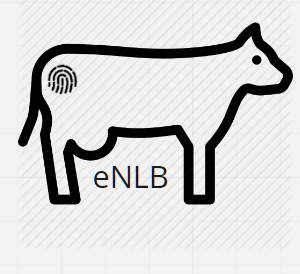Thrive or survive: how can we adapt for the future?
What will Australia in 2050 look like?
Go to Challenge | 38 teams have entered this challenge.

AgTech 2050
eNLB –
“The Future of AG” Brings together interactive technology with the traditional livestock branding process in line with other national livestock tracking and identification systems.
Our easy to use out of the box software for farmers & other enthusiasts bridges the gap with current extensive wait periods for a successful brand registry and Identity, saving you time and money.
Technology Implemented:
Machine Based Learning Algorithms
API Implementation within the Horse and Cattle Brands in Queensland & State Wide
Livestock Brand Availability Search
Ag Business IP Portal
IOT Sensor’s – Weather Alerts & Updates
Electronic National Livestock Brands Portal powered by Advanced Data Matching of TM-LINK
Our interactive software has the ability in utilizing 5G Technology and the way IOT Devices will be interacting within our daily lives. By 2050 The future of Agriculture will be so advanced in Technology that the productivity of the average farmer will see them enjoying more time with family and less time doing things the hard way.
As previous generations have never had this technology before we bring to GOVHACK 2019 The first of its kind with plugin capabilities of endless idea’s integrating with the current framework of existing systems and modules
We have implemented Machine learning with IOT Devices & 5G Technology for faster communication guaranteed by 2050 All Black spots in Australia will be operating with a minimal of 4GX leaving those in remote area’s with ultra-fast internet speed’s.
Our Prototype is underway but our Presentation and a video paints a picture from how advanced we have come from previous generations and moving the Cattle & Agriculture Industry forward.
This technology is here and we are now ready to revolutionize and suspect our plugins will integrate and make space for other’s on open source in coming together and working towards a better future for all Australians
Our Data sets are used in a unique way’s as we gather and utilize DATA Scraping and integrate with machine learning and matching branding techniques to prevent the copyright
Our Main Data was focused on
https://www.data.qld.gov.au/dataset/horse-and-cattle-brands-in-queensland
Description of Use we propose its use for its existing capabilities for its recognition with international trademarks and algorithms for how they could be utilized to match livestock brands in registration with those being registered.
Description of Use Abattoirs - QLD Beef Industry - The Idea- Landmarking and identifcation from Paddock to plate of certain livestock owner's producing quality beef
Description of Use Data scraping with integration into IOT devices a of advanced weather modification
Description of Use Ag-Tech
Description of Use Our main data set we used is branding with utilizing the current out dated system and looking at ways we can implement machine learning algorithms into a system that speeds up the 50 day registration for a cattle brand
Go to Challenge | 38 teams have entered this challenge.
Go to Challenge | 39 teams have entered this challenge.
Go to Challenge | 19 teams have entered this challenge.
Go to Challenge | 19 teams have entered this challenge.
Go to Challenge | 8 teams have entered this challenge.
Go to Challenge | 24 teams have entered this challenge.
Go to Challenge | 10 teams have entered this challenge.
Go to Challenge | 18 teams have entered this challenge.
Go to Challenge | 23 teams have entered this challenge.
Go to Challenge | 21 teams have entered this challenge.